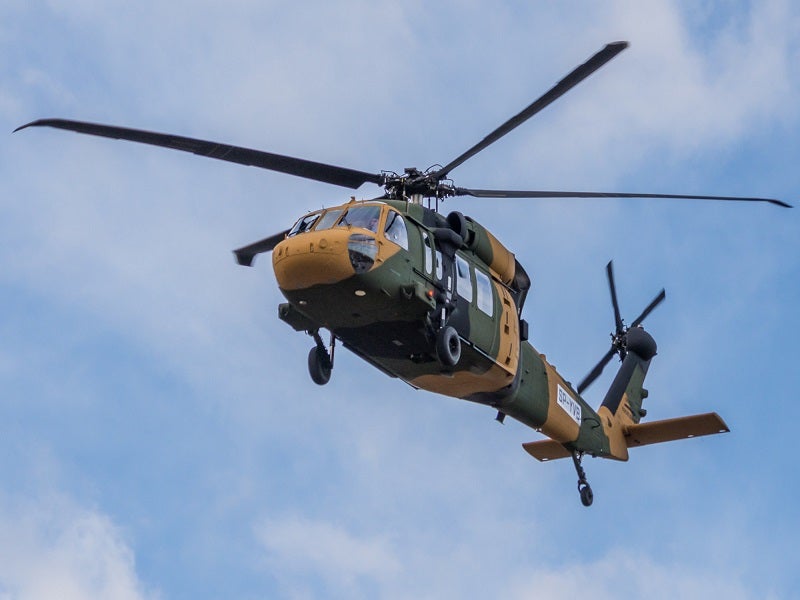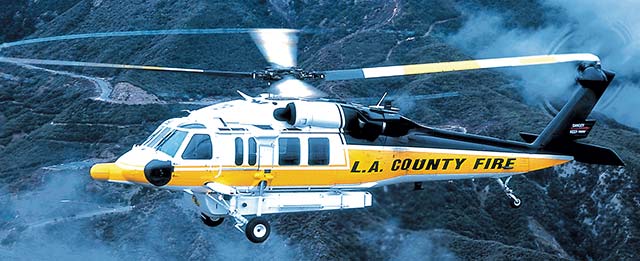Inside the Sikorsky S 70: What Sets This Helicopter Apart from Its Rivals
Inside the Sikorsky S 70: What Sets This Helicopter Apart from Its Rivals
Blog Article
High-Performance Multi-Role Rotorcraft Featuring Advanced Cabin Technologies and Integrated Sensor Systems
The realm of rotorcraft innovation has actually seen notable innovations in recent times, especially in the realm of high-performance multi-role rotorcraft equipped with cutting-edge cabin innovations and flawlessly incorporated sensor systems. These developments have not just enhanced the operational capabilities of rotorcraft but have also dramatically impacted contemporary air travel procedures on various fronts. From enhanced goal flexibility to improved operational performance, the convergence of sophisticated cockpit innovations and integrated sensing unit systems has ushered in a brand-new era of possibilities for rotorcraft applications. In the adhering to discussion, we will explore the evolution of rotorcraft innovation, explore the world of advanced cabin advancements, and check out the effects of integrated sensing unit systems on the operational convenience and efficiency of modern-day rotorcraft.
Advancement of Rotorcraft Innovation
The advancement of rotorcraft technology has been marked by significant advancements in the rules of aerodynamics, materials, and propulsion systems, shaping the capabilities and performance of contemporary rotorcraft. Wind resistant enhancements have improved the effectiveness and maneuverability of rotorcraft, enabling increased speed, agility, and security throughout flight (sikorsky s 70). Advancements in materials, such as making use of composite products and progressed alloys, have actually resulted in lighter yet stronger rotorcraft structures, boosting general efficiency and longevity. In addition, improvements in propulsion systems, consisting of extra powerful engines and ingenious propulsion modern technologies, have actually made it possible for rotorcraft to achieve higher elevations, faster rates, and greater hauls.
These developments have not just changed the capacities of rotorcraft but have likewise increased their applications across numerous markets, consisting of military, business, and emergency situation services. The constant evolution of rotorcraft technology continues to drive development in the field, pushing the boundaries of what is feasible and shaping the future of vertical flight.
Advanced Cockpit Innovations
Building upon the foundational innovations in the rules of aerodynamics, materials, and propulsion systems, the world of rotorcraft innovation now changes focus towards introducing Advanced Cockpit Innovations. The integration of innovative innovations within the cockpit atmosphere plays an important duty in boosting the functional capacities, security, and effectiveness of modern-day rotorcraft. sikorsky s 70. Advanced Cockpit Innovations include a vast range of functions developed to give pilots with enhanced situational awareness, streamlined information administration, and instinctive control interfaces
One of the key improvements in cockpit design is the implementation of glass cockpits, which change standard analog evaluates with high-resolution display screens. These digital systems use customizable formats, real-time information combination, and boosted readability, making it possible for pilots to access crucial information at a look. Advanced avionics systems, such as fly-by-wire controls and enhanced truth display screens, are transforming just how pilots engage with the airplane, permitting for exact control and improved decision-making abilities.


Integrating sophisticated cabin innovations not only boosts pilot performance however also adds to total objective efficiency and security in complex functional settings. By leveraging advanced technologies within the cabin, rotorcraft suppliers are setting new criteria for operational quality and objective success.
Integrated Sensor Equipments
With the advancement of rotorcraft modern technology, the assimilation of sophisticated Integrated Sensing unit Equipment has actually become vital in boosting functional efficiency and safety and security. These Integrated Sensing unit Systems include a large selection of innovations that offer important information for different functions such as navigation, surveillance, targeting, and ecological monitoring. By perfectly integrating sensors like radars, video cameras, lidar, and infrared systems right into rotorcraft, operators can gain from enhanced situational awareness, boosted mission capabilities, and decreased pilot workload.
One trick advantage of Integrated Sensing unit Systems is their capability to collect real-time information and give actionable understandings to pilots and mission operators. Advanced radar systems can spot and track targets over long distances, permitting for very early risk detection and efficient feedback planning. Furthermore, integrating infrared and electro-optical cameras makes it possible for rotorcraft to conduct reconnaissance and surveillance goals with accuracy and precision.
Essentially, the assimilation of innovative more information sensor innovations right into rotorcraft not only boosts operational effectiveness however also contributes substantially to general goal success and crew safety and security. As rotorcraft remain to progress, the function of Integrated Sensing unit Systems will unquestionably remain at the center of technology in the aerospace sector.
Functional Flexibility and Effectiveness
Enhancing functional flexibility and performance in rotorcraft is an all-natural development from the assimilation of innovative Integrated Sensing unit Systems. By leveraging the insights and data offered by these advanced sensor systems, rotorcraft can enhance their efficiency throughout different objectives and settings.
Operational adaptability includes the ability of rotorcraft to adjust to various roles and circumstances successfully. With sophisticated cockpit innovations and incorporated sensing unit systems, rotorcraft can flawlessly transition between tasks such as search and rescue, clinical evacuation, security, and more. This flexibility improves the rotorcraft's capability to meet varied operational requirements without needing considerable reconfiguration.
Performance in rotorcraft procedures is critical for taking full advantage of mission performance and resource application. Integrated sensor systems play a pivotal role in enhancing functional performance by giving real-time data on climate problems, surface mapping, target tracking, and extra. This information makes it possible for pilots to make enlightened decisions quickly, optimize trip paths, save gas, and boost total objective efficiency.
Influence On Modern Air Travel Operations

Moreover, the combination of check these guys out advanced sensing units facilitates enhanced goal planning and implementation, making it possible for rotorcraft to perform a large range of tasks with enhanced accuracy. From search and rescue procedures to aerial firefighting and police goals, the capacities of contemporary rotorcraft geared up with advanced cabin innovations and incorporated sensing unit systems are unrivaled.
In addition, the impact of these improvements prolongs beyond functional effectiveness to cost-effectiveness and sustainability. By maximizing trip courses, fuel consumption, and upkeep schedules, high-performance rotorcraft furnished with innovative cabin innovations and sensing units contribute to decreasing functional prices and ecological impact, making them essential properties in modern aviation procedures.
Verdict
Finally, the high-performance multi-role rotorcraft with advanced cabin modern technologies and integrated sensing unit systems stands for a substantial advancement in aeronautics technology. These developments enhance functional flexibility and effectiveness, inevitably affecting modern-day air travel operations in a positive means. The integration of these sophisticated technologies permits enhanced capacities and efficiency in various goal situations, showcasing the continued advancement of rotorcraft technology in the air travel sector.
The realm of rotorcraft modern technology has actually seen significant improvements in current times, especially in the realm of high-performance multi-role rotorcraft outfitted with advanced cabin innovations and seamlessly integrated sensing unit systems. From enhanced objective convenience to enhanced functional effectiveness, the convergence of advanced cabin modern technologies and integrated sensing unit systems has actually ushered in a brand-new age of possibilities for rotorcraft applications. In the adhering to discussion, we will certainly check out the evolution of rotorcraft innovation, dive into the realm of innovative cabin developments, and take a look at the effects of incorporated sensing unit systems on the operational convenience and performance of modern-day rotorcraft.
"/>
Report this page